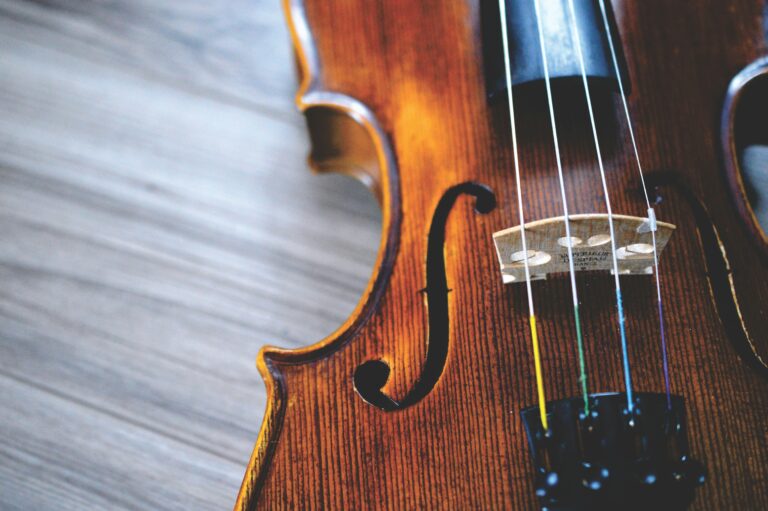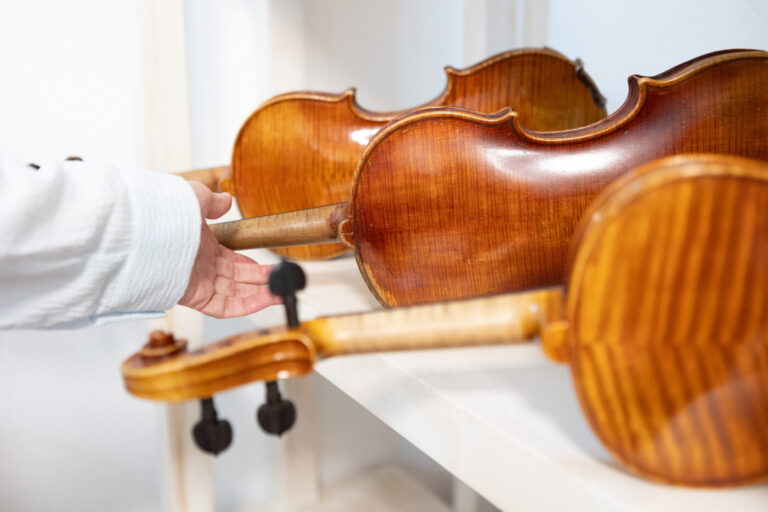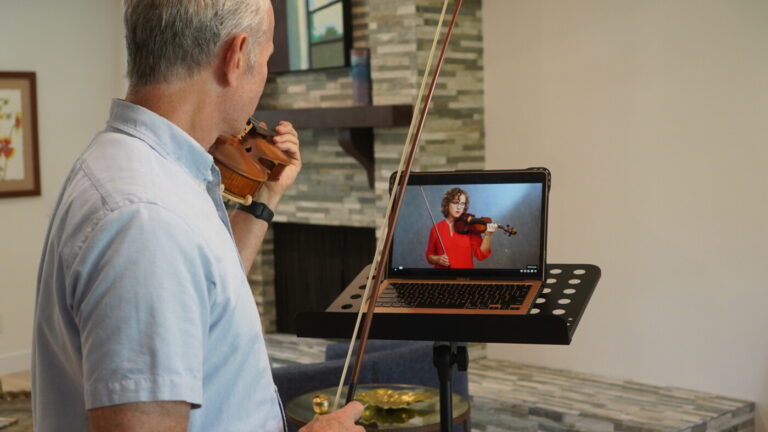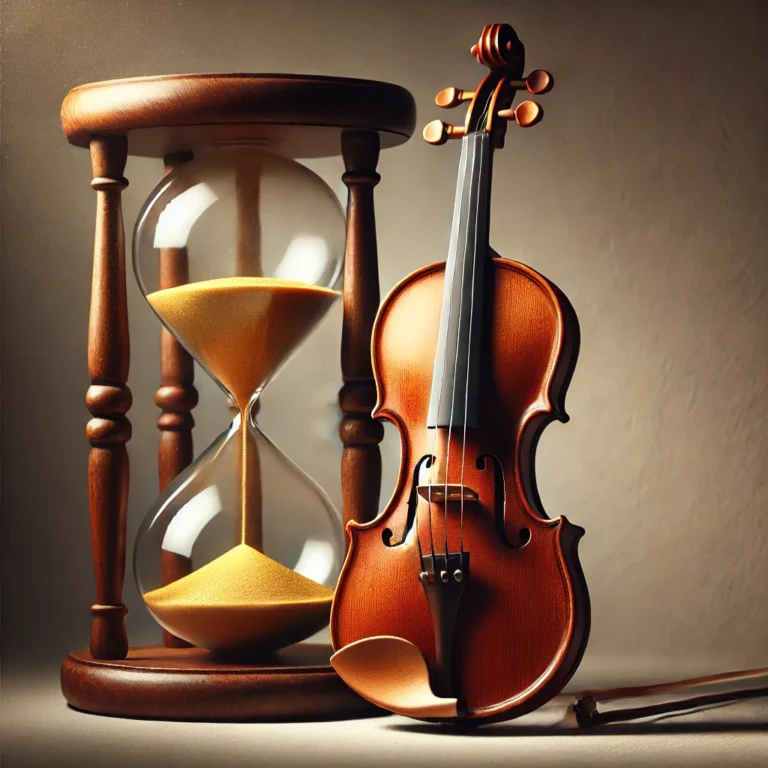Overcoming Fear and Anxiety in Violin Practice
By Pablo Fayad
For adults, learning the violin is a demanding journey. It brings to light challenges woven into everyday life—sometimes subtle, sometimes magnified the instant we begin to play.
In this article, I invite you to explore fear and anxiety and to reframe it from a healthier place, supported by adapted emotional regulation. My goal is to offer professional tools and scientific foundations that may help you face this topic with more clarity.
Why write about fear and anxiety?
Sometimes fear appears in my daily life—not as something dramatic, but as a natural reaction I’ve learned to identify over time. For years, I assumed it was a sign that something was wrong. Now I see it simply as one more part of being human, a signal that can offer information rather than a threat.
I don’t have a defining moment in which I overcame fear onstage or failed in a way that changed everything. My experience is more ordinary. It lives in the long-term relationship I’ve built with the violin: the lessons, the teachers, the hours of practice, and the periods when I set the instrument aside. All of this shaped how fear and anxiety began to appear around my musical life.
At different points, I gave anxiety too much influence—whether because of criticism, comparison, or self-imposed pressure. Over time, I realized that these reactions didn’t come from the violin itself, but from the expectations and meaning I had attached to it.
I’m still learning how to manage that fear. I’m not trying to erase it; I just work to keep it in proportion. It can be present, but it doesn’t need to dominate. Sharing this process here is part of understanding it more clearly and offering a framework that might help others reflect on their own musical experiences.
Reframing fear and anxiety
As human beings, our inner world is not divided. What happens in our daily lives—what shapes our identity and the spaces we inhabit—creates constant interactions. Therefore, our musical self cannot exist in complete isolation from the rest of who we are.
Fear and anxiety in music often reflect similar emotions present elsewhere in life. It’s rare to feel an intense emotion in one domain and nowhere else. That is why a musical instrument and its practice can become powerful tools for self-knowledge and personal growth.
Fear vs. Anxiety
Fear is sudden, intense, and short-lived. A basic, essential emotion.
Anxiety, on the other hand, is prolonged activation, marked by worry and anticipation. It looks toward the future.
While fear is immediate and intense, anxiety tends to linger and anticipate. Our brain evolved to detect real dangers, but in modern life those dangers rarely appear. Still, the mechanism activates during interviews, social interactions, or musical moments.
The wild lion that once threatened us now hides in the most unexpected places. After sharing my personal experience and defining Fear and Anxiety, let’s now examine how fear manifests physically, mentally, and emotionally.
How do I identify fear—and what is it trying to tell me?
Fear doesn’t always look like fear. Sometimes it disguises itself as anxiety, irritability, or even apathy.
To recognize it, it helps to observe three levels:
- Physical
- Shallow or interrupted breathing
- Muscle tension (neck, chest, abdomen)
- Palpitations, sweating, cold hands
- A knot in the stomach
- A desire to escape or avoid something
- Emotional
- A sense of threat or vulnerability without clear reason
- Negative anticipation (“this is going to go wrong”)
- Perfectionism as a way to control the situation
- Freezing up when exposed or making decisions
- Mental
- Repetitive “what if…?” thoughts
- Difficulty concentrating
- A critical or catastrophic inner dialogue
Recognizing fear means observing without judgment—like a curious scientist studying what’s happening inside. And, of course, seeking professional help when necessary.
It’s worth asking: what does fear look like in your own musical journey?
Fear as a messenger
Fear is not the enemy: it is a messenger. This doesn’t mean fear is irrational—it means we need to decode its message.
Its evolutionary purpose is to protect you, but in modern or artistic contexts it often activates out of proportion. When it appears, it may be saying:
| Type of Fear | What it means |
| Real (protective) | “Be careful. This might hurt you physically or emotionally.” |
| Symbolic (creative or existential) | “This matters to you.” |
| Learned (conditioned) | “Something similar hurt before—check if it’s still dangerous.” |
| Growth-related | “You’re leaving familiar territory; there’s something new to learn.” |
Not all fear means danger. Sometimes it’s simply an inner system sending signals—a kind of bodily dialogue. Our job is to learn how to read it.
Once we understand fear’s message, the next step is learning how to respond.
Practical Strategies to Overcome Violin Anxiety
Fear and anxiety can appear in situations such as:
- Introducing new techniques (vibrato, shifting, double stops)
- Comparing ourselves with other players—or with “perfect” versions online
- First public performances
- Recording or undergoing evaluations
Once we recognize fear’s message, we can respond with concrete strategies that strengthen our practice.
- Physical and breathing preparation
- Diaphragmatic breathing: inhale 4–6 seconds, exhale 6–8 seconds. Repeat 6 times.
- Joint mobility in shoulders, wrists, and fingers (5–8 minutes).
- Practice design
- Short, deliberate sessions: 4 blocks of 12–20 minutes with micro-objectives.
- Slow practice with a metronome; increase tempo only after 3 stable repetitions.
- Contextual variability: different tempos and dynamics to strengthen motor memory.
In addition to physical preparation, cognitive strategies play a vital role:
- Cognitive reframing
- Notice automatic thoughts and replace them with concrete actions.
- Keep a practice journal with goals, achievements, areas to improve, and emotional notes.
- Gradual exposure
- Start with safe audiences: record yourself, then play for a friend, then a small group.
- Simulate real performance conditions.
- Attentional strategies
- Sensory focus techniques: choose one physical cue (a finger, the bow’s weight, breath).
- Two minutes of micro-mindfulness before playing.
Above all, communicate with your teacher. A good teacher doesn’t only teach technique—they transmit confidence, clarity, and understanding. Personally, studying with Beth Blackerby showed me how transformative a teacher with strong communication and awareness can be.
These strategies are not just technical—they’re part of building a deeper sense of security.
Calm vs. Sense of Security
We often believe the opposite of anxiety is calm. However, as psychiatrist Anabel González explains, calm is temporary—while feeling secure is a deeper, long-term state.
Calm is temporary. I can do something that calms me down, but if the fear comes back a little while later, what do I do then?” — Anabel González (24:12)
The sense of security is not born from control, but from experience, reflection, and human connection.
With every mistake, with everything that goes wrong, we learn—and that’s what allows us to feel that we have resources. — 27:03
In musical learning, our sense of security grows through:
- Consistent practice
- Understanding what we are doing technically
- Supportive relationships with teachers, peers, and institutions
- A kind inner voice
- Developing clear standards for consistent excellence in technique and musicality
When this sensation grows, the lion stops roaring—or at least, we learn to listen to it without freezing. This shift—from control to connection—is where true learning begins.
Conclusions
Fear and anxiety are part of life, and although their presence is expected, we cannot allow them to dominate us. Applying practical strategies and seeking professional support can be a strong first step toward understanding these emotions and how they influence our musical performance.
This is a good moment to pause and ask ourselves how we are experiencing these emotions, and whether we need to work on them to build more confidence when we play and to inhabit our musical processes with greater calm. I hope these ideas and strategies accompany you whenever fear or anxiety show up.
Now it’s time to put them into practice—to explore and continue cultivating our relationship with the violin.
Bibliography
- González, A. (2023). ¿Por dónde se sale? Cómo deshacer el miedo, aliviar el malestar psicológico y adquirir un apego seguro. Ediciones Destino.
- AprendemosJuntos.bbva.com. (2023, October 23). V. Completa. Superar el miedo: la clave para una vida sana. Anabel González, psiquiatra [Video]. YouTube. https://www.youtube.com/watch?v=de5m11tkezI
- Klickstein, G. (2009). The Musician’s Way: A Guide to Practice, Performance, and Wellness. Oxford University Press.







